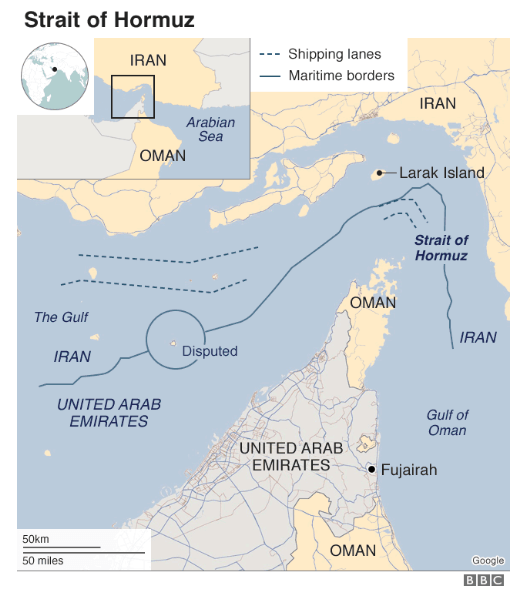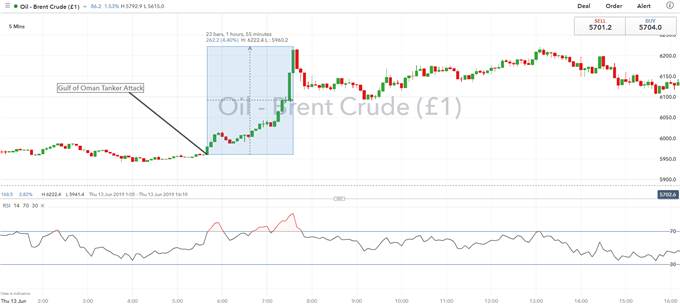The Strait of Hormuz and Oil Analysis - Talking Points:
- What is the Strait of Hormuz?
- Why is it Important?
- History of the Region’s Conflict
- Can Iran Close the Strait of Hormuz?
- How Does Local Pressure Impact Oil Prices?
What is the Strait of Hormuz?
The Strait of Hormuz lies between Oman and Iran and is considered the world’s most important chokepoint. It is 21 miles wide at its narrowest point, while the shipping lanes in each direction are just two miles wide.

Source: BBC
Why is the Strait of Hormuz Important?
Over a third of global seaborne crude oil[1] exports pass through the Strait of Hormuz with roughly 21 million barrels per day (mbpd) of crude, condensate and refined products from OPEC’s top five producers (Saudi Arabia, UAE, Kuwait, Iraq and Iran). The majority of the oil that flows through the Strait heads towards Asia, while Western nations also heavily rely on the supplies from the Strait.
Typically, disruptions in the Strait can have a notable impact on trader sentiment in the oil complex. As a reminder, oil prices jumped over 4% in June 2019 when two attacks on tankers were witnessed in the Gulf of Oman.
Brent Crude Oil Price Chart: Five-Minute Timeframe (Intra-day)

Source: IG Charts
History of Conflict in the Strait of Hormuz
- 1980-1988: During the Iran-Iraq War, Iran threatened to close the Strait after Iraq disrupted shipping.
- 1988: The US Navy attacked Iran in retaliation for the Iranian mining of the Persian Gulf during the Iran-Iraq War.
- 2008: Iranian vessels had threatened three US Navy ships in the Strait.
- 2012 (Jan): Iran threatens to block the Strait of Hormuz in response to the US and European sanctions, which had been aimed at curtailing



